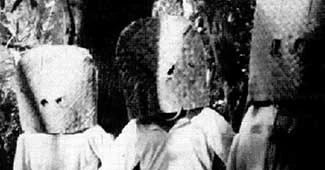The Case of the 19-Year Old Makapili Charged with Treason for Activities in Lipa and Santo Tomas
In this article, we take a look at another Supreme Court case involving treason charges against a member of the Makabayang Katipunan ng mga Pilipino (Patriotic Association of Filipinos), a militant group that functioned collaboratively with the Japanese Imperial Army in World War II1. The defendant was one Fernando Martin, a resident of the town of Lopez in Quezon, who went by the alias of “Vasques2.”
Martin was 19 years of age in 1945 when he was said to have committed the acts of treason for which he was found guilty on three counts by the Court of First Instance of Batangas. The fourth count was dismissed by the lower court “for lack of evidence.”
Martin had earlier joined the Yoin Society, “the main purpose of which was to aid the Japanese forces in their campaign against the Fil-American army and the guerrillas.” He would be given military training by the Japanese Imperial Army and become an officer of the Makapili. He was supplied with arms and went around wearing the uniform of the Japanese army. He trained new Makapili recruits and acted as informant to the Japanese. These collaborative activities were the basis of the first charge of treason for which he was found guilty by the lower court of Batangas.
The second count was for an incident which happened on 25 January 1945 in the barrio of Marauoy just north of the poblacion of the then-town of Lipa. Allied forces had been in the Philippines since late the previous year, and were to make a landing of its troops on the beaches of Nasugbu on the 31st of January. The Japanese army, therefore, had also intensified operations against Filipino guerrillas, who had been harassing Japanese troops and providing intelligence to the Americans.
In Marauoy, Martin along with several other Filipinos (presumably members of the Makapili as well) and Japanese soldiers entered the store of one Felisa Latisa to search for suspected guerrillas Primitivo Lazat and Baldomero Soriano. Unable to find them, the group moved on to search other houses. They entered the house of one Pablo Magsino, where many people had gathered. Of these, Cristiano and Mariano Reyes were shot to death. Many more would have been killed indiscriminately were it not for the intercession of one Marcelina Tesico, who vouched that there were no guerrillas among those gathered in the house.
Lazat was subsequently located in another house, arrested and tied. He would be taken away and nothing would be heard of him since. Later, Soriano was also found. Martin himself asked Soriano if he was a guerrilla lieutenant. When the latter repeatedly denied that he was, Martin first hit him with “a big stick one meter long” and then shot him to death with a rifle.
The third count of treason on which Martin was found guilty was for an incident that occurred in Barrio San Antonio in Santo Tomas. One Josefina Jusay de Villanueva, with her sister Bella, parents and a few relations were travelling to the mountains when they were accosted by Martin, who was accompanied by some Japanese soldiers.
Martin arrested and tied the hands of de Villanueva’s father, who was supposed to have been suspected of being a guerrilla. The entire group was forced to board a truck which would then take them to the Japanese camp at barrio Sulok, presently called Santa Cruz. The sisters were taken to the house of one Primo Quinto, whose wife was a relative of theirs. Their parents were taken to the barracks of the Japanese soldiers.
The following morning, the sisters were allowed to see their parents. They quickly noticed that the faces of their father as well other people detained at the barracks were swollen and that their clothes were torn, apparently from having been tortured. In the evening of the same day, they heard their mother scream loudly. The sisters never saw their parents again.
Martin denied all of the accusations and testified that he had, in fact, been arrested by the Japanese in his native Quezon and taken to the garrison in Lipa. He also said that he was forced by the Japanese to work at the airfield in Mataasnakahoy3. From there, at least according to him, he would be taken to Alaminos and later barrio Sulok. While he admitted that he had become acquainted with Josefina Jusay de Villanueva, he claimed to have had no knowledge whatsoever of the acts for which he was being charged.
The Supreme Court, however, noted that Martin’s testimony was “uncorroborated” and could “not prevail over the positive, direct, and straightforward testimony of the witnesses for the prosecution, some of whom were victims who had survived the ordeal. There was no motive absolutely for said witnesses to testify falsely against the accused.”
The verdict of guilty on three counts of treason was, therefore, upheld by the Supreme Court, which nonetheless commuted the lower court’s penalty of death to reclusion perpetua (similar to life imprisonment) “in view of the fact that eight Justices of the Court failed to reach a decision on it as provided for section 9 of Republic Act No. 296, otherwise known as the Judiciary Act of 1948.” Martin was also ordered to pay a fine of ₱10,000 “without subsidiary imprisonment in case of insolvency.”
2 The details of the case for this article are from “The People of the Philippines v Fernando Martin (alias Vasques),” online at The LawPhil Project.
3 The Japanese built two airfields in the Lipa-Mataasnakahoy area. The Lipa West Airfield is now known as Fernando Air Base; while Lipa East Airfield was either in Calingatan in Mataasnakahoy or San Salvador in Lipa.

